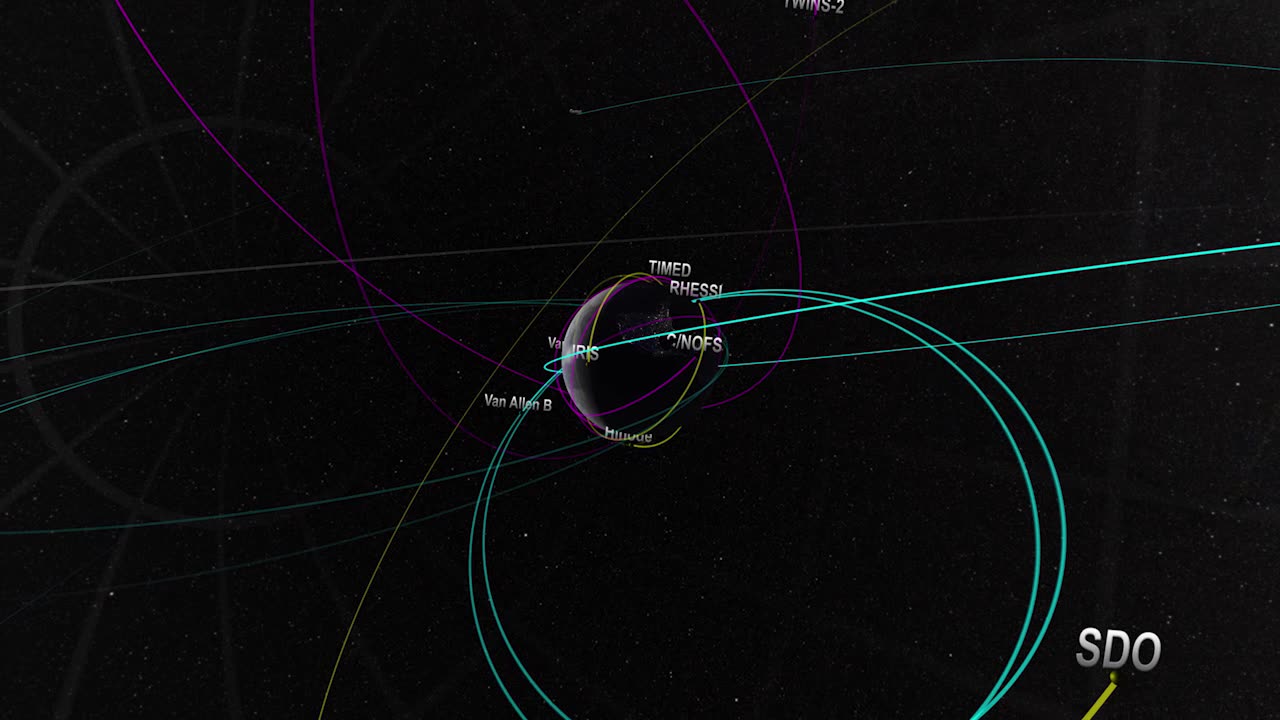Premium Only Content

SYNTHESIS: NASA DATA VISUALIZATIONS IN ULTRA-HD (4K)
The solar system? Big. The galaxy? Bigger. What's bigger than that? Before you smugly suggest "The universe?", check this out: 4K Videos from NASA!
A little more than a decade ago, television transformed from the boxy, standard definition dimensions of 20th century engineers to the wider and sharper images of high definition TV. Well into the 21st century now, rapid growth in the next generation of video images promises to deliver spectacular pictures with profoundly greater fidelity and resolution than even the best HDTV. Officially known as Ultra-High Definition Television, it has rapidly come to be known as "4K", a moniker derived from the approximate width of images measured in pixels horizontally across a screen.
NASA has a long legacy pushing the boundaries of advanced media technologies, befitting its unique role in presenting important, state-of-the-art science and engineering stories to the American public. On this web page you'll find the first major release of 4K video content, presented in the public domain. The release of these media are concurrent with the launch of a new, non-commercial Ultra-High Definition channel in partnership with Harmonic.
For each of the following items on this website you may preview the program in your browser or you may select one of several different resolutions from the "download" button in the lower right hand corner of each. Be advised that the 4K videos will require fast internet connections and substantial storage space.
When we feel The Earth beneath our feet, see it with our eyes, hear it when the wind blows, we perceive only the most obvious filaments of a far more complex place. Only with exquisite machines--spacecraft in orbit and powerful computers on the ground--can humanity begin to uncover the elegant nature of our complex home.
Presented here are a collection of data visualizations based on observations gathered by a fleet of spacecraft. In various depictions we see the currents of the world's oceans, changes in temperature and land cover over time, and precipitation as it cycles energy and water around our living planet.
But The Earth is only one part of a dynamic sphere, and with its companion The Moon nearby, we cannot hlep but remeber that our whole planet travels in a wider ocean. This video presents Earth's Moon with data gathered by the remarkable Lunar Reconnaissance Orbiter, an advanced probe designed to map our planetary companion in unprecedented detail.
Finally, our place in space would be cold and lifeless if it were not for our omnipresent star, The Sun. Shining ceaselessly in the void, it bathes our home planet in life giving energy, and holds The Earth, The Moon, and everything else in the solar system in its gravitational thrall.
The data used in the creation of this video come from a wide range of spacecraft, all part of NASA's broader Science Mission Directorate.
Credit: Michael Starobin, Producer
All data visualizations provided by the Scientific Visualization Studio
-
 1:21:41
1:21:41
Kim Iversen
5 hours agoNick Fuentes Denies Israel Killed Charlie Kirk | Right-Wing CANCELS Jimmy Kimmel
27.6K171 -
 1:01:59
1:01:59
Candace Show Podcast
3 hours agoEXCLUSIVE! Another Photo Of Tyler Robinson | Candace Ep 238
76.9K240 -
 2:21:09
2:21:09
Redacted News
4 hours agoWhat are they hiding? New video evidence in Charlie Kirk's Shooting SHAKES FBI'S case | Redacted
144K294 -
 41:53
41:53
Kimberly Guilfoyle
7 hours agoCharlie's Legacy and Our Mission
42.4K9 -
 1:07:55
1:07:55
vivafrei
6 hours agoJimmy Kimmel Out Indefinitely! Trump "Srubs" Study on Right Wing Violence? Clinton Tweet & MORE
206K83 -
 1:35:02
1:35:02
The Quartering
6 hours agoNuclear Fallout From Jimmy Kimmel Firing, New Head Of TP USA, Obama Whines
231K75 -
 23:35
23:35
Jasmin Laine
5 hours ago“We Were Betrayed”—Carney HUMILIATED As His Base REVOLTS Against Him
40.7K27 -
 LIVE
LIVE
LFA TV
22 hours agoKIMMEL GONE | ANTIFA LABELED TERRORISTS! - THURSDAY 9/18/25
753 watching -
 2:21:28
2:21:28
freecastle
8 hours agoTAKE UP YOUR CROSS- Hope In GOD, and Fear NO Evil!
20.4K10 -
 1:34:10
1:34:10
The HotSeat
5 hours agoChapter 32 Begins: Honoring Charlie Kirk’s Legacy & Jimmy Kimmel Gets Canceled
27.7K9